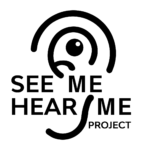
Cyberbullying is a problem that needs to be addressed in the digital era, especially among young people. It happens frequently for educators to find themselves in the challenging position of learning that one of their pupils is involved in cyberbullying. This is a significant problem because instructors are so important in influencing students’ habits and directing them toward healthy internet usage. This article seeks to offer advice on what to do if you learn that a student in your care is engaging in cyberbullying and how the Erasmus+ STAND UP project can help prevent it in the context of education.
Recognizing online bullying
Understanding what defines cyberbullying is crucial before discussing how to handle a student who is engaging in it. The intentional and frequent use of digital communication means to harass, threaten, or hurt people is known as cyberbullying. It can appear in many different ways, such as by sending unpleasant messages, starting rumors, posting embarrassing materials, and more. It is essential for educators to recognize the symptoms of cyberbullying in order to intervene appropriately.
Taking on the Problem
Keep Calm and Focus: It can be upsetting to learn that your student is a cyberbully, but it’s crucial to tackle the matter calmly and firmly. Addressing the behavior and assisting the learner in comprehending the implications of their actions should be your main focus.
Gather Information: Gather information about the cyberbullying before taking any action. This could consist of screenshots, communications, or any other pertinent data. Having hard evidence can help you solve the problem more successfully and prevent any misunderstandings.
How to Start a Conversation To discuss the matter discreetly, get in touch with the student. Instead of making charges, concentrate on posing open-ended inquiries that urge others to consider their conduct. It’s crucial to establish a judgment-free environment where they feel at ease talking about the circumstance.
Teach about cyberbullying Many pupils might not understand the seriousness of their behavior in full. Inform the student of cyberbullying’s effects on victims and its legal repercussions. Educate children on the value of ethical online conduct and empathy.
The STAND UP Project’s Role
To counteract cyberbullying in educational contexts, the STAND UP – Fighting cyberbullying by detecting it in the VET classroom initiative provides helpful materials and tools.
Fighting Cyberbullying: PR1 Teacher Training Curriculum: This curriculum gives teachers the knowledge and abilities they need to deal with cyberbullying successfully. It covers methods for intervention, prevention, and identification. To promote a secure online environment, educators might incorporate these principles into their instruction.
Say No to Cyberbullying! Student Learning materials (PR2): These materials provide students the power to identify cyberbullying, confront it, and stand up for their classmates. Students are involved in meaningful discussions on appropriate internet behavior through interactive activities, dialogues, and real-world situations.
Students, parents, and educators can easily obtain information about cyberbullying with the PR3 mobile app, STAND UP against Cyberbullying. To ensure a team effort in addressing the issue, it provides advice, resources, and reporting methods.


 Previous Post
Previous Post Next Post
Next Post